THE MAN NGINGE’ Spanish Origin? Not? By: Pale Eric Forbes
June 13, 2018 by admin
Filed under Special Forces
THE MAN NGINGE’ Spanish Origin? Not? By: Pale Eric Forbes
Recently, I noticed a good number of comments on Chamorro culture social media sites stating that the man nginge’ is a Spanish custom.
None of the people claiming this provide any historical evidence. How can they? It isn’t there.
Consider the following :
1. Early European accounts of our ancestors describe different gestures of respect practiced among our ancestors before Spanish colonization.
Just to cite one early source, the Jesuit Francisco García, writing very early during the first decades of Spanish colonization, whose sources were the letters and reports written by the Spanish missionaries on the ground here in the Marianas.
García says, “They (the Chamorros) practice many courtesies, and an ordinary usage on meeting and passing in front of one another is to say ‘ati arinmo,’ which means ‘Allow me to kiss your feet.’”
He also says, “To pass the hand over the breast of the person they visit is a great courtesy.”
So we notice here no mention of taking someone’s hand and “kissing” it with the nose, which is how we have practiced the man nginge’ for at least a couple of hundred years, if not longer.
But we do see that our ancestors did have gestures of respect which involve kissing (with the nose?), the feet, the hands and the breast or chest.
Ati arinmo, by the way, is the way a Spaniard spelled what he heard with his Spanish ears. And even this differed from Spaniard to Spaniard, one Spaniard spelling a Chamorro word one way and another Spaniard spelling the same word a slightly different way.
Some suspect, as I do, that arinmo is actually addeng-mo. Addeng is the Chamorro word for foot or feet. (On Guam, this has been replaced by the Spanish loan word påtas, which means the feet or paws of animals.)
2. Spaniards do not have, nor ever had as far as we can tell, the ordinary custom of kissing, much less with the nose, the hand of an elder, authority figure or higher status person.
Bishops and the higher clergy wore rings and it was that which people kissed. The rings were symbolic of the church dignitary’s spiritual marriage to his diocese. In certain situations, political or military leaders had their rings, or hands, kissed with the lips as a sign of loyalty by subordinates.
Women, especially of the higher class, would sometimes extend their hand to be kissed. But this was always at the invitation of the woman. In Chamorro culture, the subordinate always makes the first move, reaching for the hand of the saina or superior.
Kissing was done with the lips, and sometimes the lips never even touched the hand. But the kiss was never made with the nose, while Chamorros kiss with the nose.
3. Our close neighbors, the Filipinos, practice a similar custom that is accepted as a pre-Spanish gesture.
By “close” I mean we have common racial and linguistic roots and many similar customs and values.
The Filipinos practice their own gesture of respect by taking the hand and placing it on the forehead, rather than on the nose or the mouth.
Early Spanish descriptions of the Filipinos indicate that this was already a custom before Spanish influences took root there.
4. Indonesians and Malays also practice the gesture.
If one argues that the gesture is Spanish in origin, because both the Marianas and the Philippines were colonized by Spain, how then does one account for the fact that the Indonesians and the Malays (not everyone in Malaysia is Malay) also practice it? Neither Indonesia nor Malaysia were ever Spanish colonies.
Like the Filipinos, Malays and Indonesians take the hand to the forehead, but, according to some writers, the hand is sometimes “kissed” with the nose, but never with the lips, the same way Chamorros avoid using the lips.
5. Borrowed terms do not necessarily mean borrowed actions.
Perhaps some people think the gesture is Spanish-based because the gesture is accompanied by Spanish loan words. When one reverences the hand of a man, one says, “Ñot,” which is short for Spanish “señor,” or “sir.” For a woman, “Ñora,” short for “señora” or “madam.”
But all that shows is that, at some point, Chamorros adopted some Spanish forms of address.
The Filipinos also borrowed the Spanish word mano, or “hand,” and call their form of hand-reverencing the mano po. That phrase is a combination of Spanish manoand Tagalog po, a term of respect.
The Indonesians and Malays call their hand gesture the salim, which might be borrowed from Arabic (Malays and Indonesians are overwhelmingly Muslim). But the gesture itself is not Muslim nor Arab.
My opinion….
Since the Spaniards themselves did not practice it; since it is not practiced in any former Spanish colonies in Latin America; since the gesture (with minor variations) is practiced by peoples with geographic and cultural affinities (Chamorros, Filipinos, Malays/Indonesians); since the gesture never involves the lips (something more European); since old accounts describe gestures of respect practiced prior to Spanish colonization, I am most comfortable saying
1. The gesture is not Spanish in origin.
2. The roots of the man nginge’ lie in our pre-contact indigenous culture because early accounts do speak of other gestures of respect, so at least the roots and the cultural values were already in place before colonization.
3. Since Ñot and Ñora are Spanish loan-words; since the early accounts do not describe the reverencing of hands but rather other gestures of respect; these earlier gestures evolved over time, at least as far as the terms of address are concerned, and perhaps even the manner (from reverencing feet to reverencing hands).
4. It is possible that our ancestors did reverence the hand, even though European writers did not document it. After all, García says the Chamorros of the 1600s practiced “many” courtesies, although he details only three of them.
5. It is possible that, in pre-contact society, reverencing the feet was reserved for special situations and that reverencing the hand was the norm, although the verbal formula “Allow me to kiss your feet” remained. This is similar to the old custom of ending a letter in Spanish with “I kiss your hand” even though that was not meant literally.
Other than that, I think we are on shakier ground drawing other conclusions. Many of my own conclusions are couched in words like “perhaps” or “possibly” because coincidences and similarities alone are not sufficient to prove connections.
Good history involves good evidence. And alas, good evidence is absent more often than not.

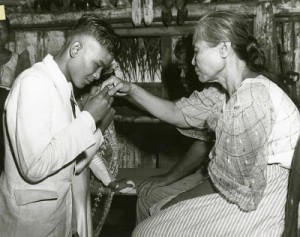
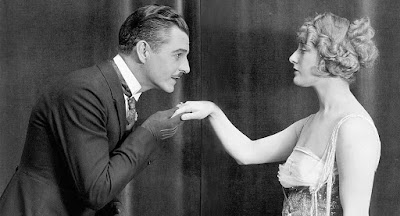
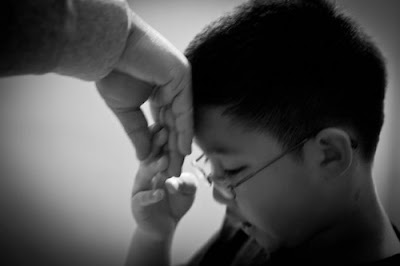
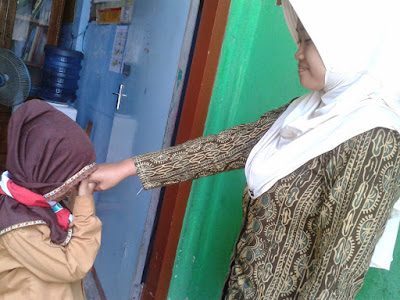


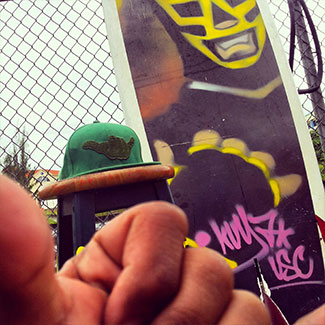

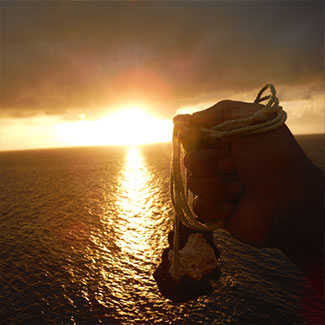

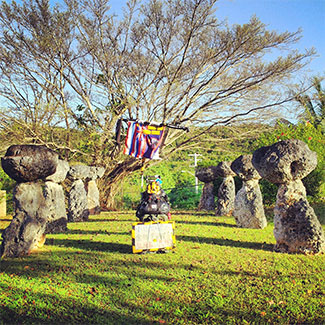
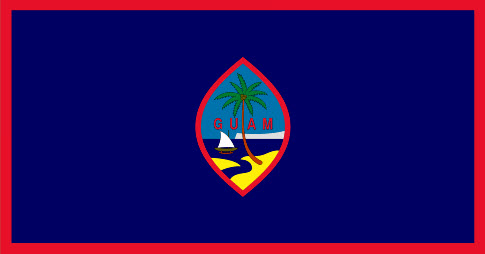
Comments
a penny for your two cents
and oh, if you want a pic to show with your comment, go get a gravatar!